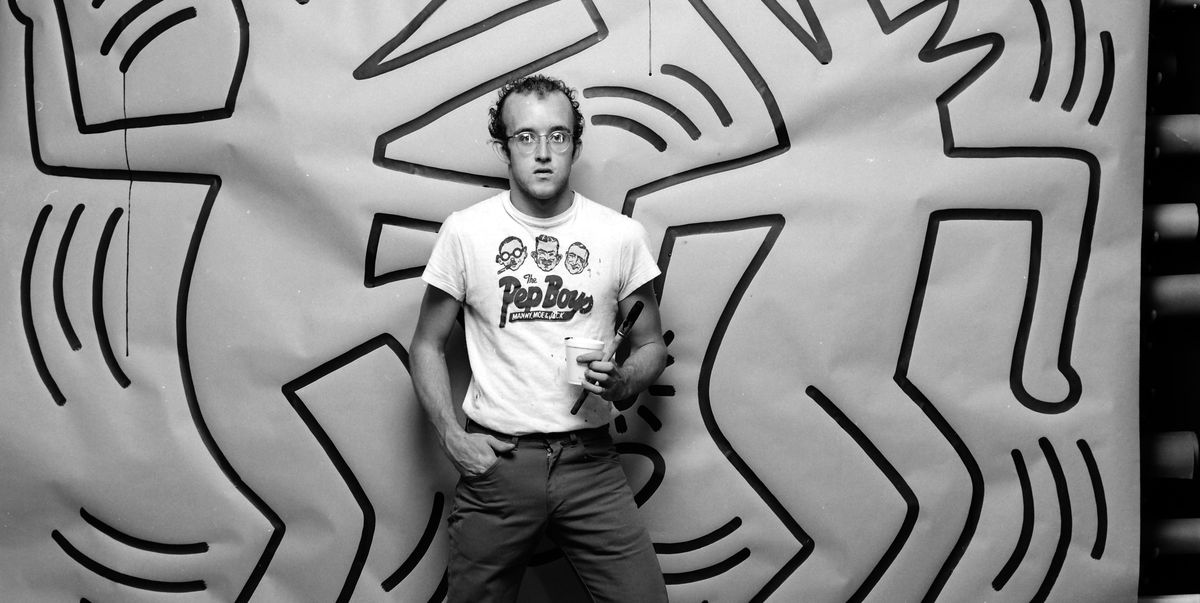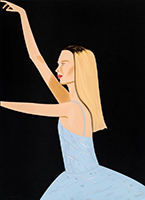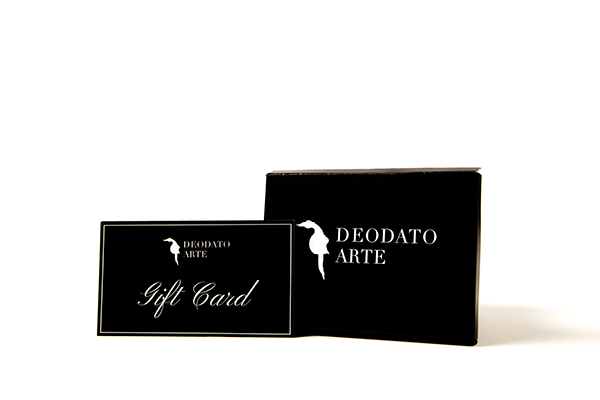
Keith Haring Murals with Graffiti by Haring. Find out Haring's Street and Pop Art Graffiti with Doodles
Keith Haring: 5 Murals with Graffiti by Haring
In this article we will share with you anecdotes and curiosities about the 5 most famous Murals made by Graffiti master and pioneer Keith Haring.
Loved and appreciated worldwide, Street Artist Keith Haring has been able to deliver, with his works, messages destined to stay in the hearts and minds of those who could admire them.
From Haring Doodles portrayed in the 1986 Mural Crack is Wack , symbol of the anti-drug activism in the streets of New York City, to the yellow Barking Dogs of Keith Haring Milwaukee Mural realised for the opening of the Haggerty Museum in 1983.
With his Stylised Men Haring managed to face the "hot themes" of the 1980' s, often pointing the finger against the institutions that seemed to avoid the problems of those years.
Drug, homosexuality and war find in Barking Dogs and in Haring's Men the perfect instrument to raise awareness among the Public opinion about the main issues, making accessible to everyone social themes which are profound, complex and, sometimes, troublesome.
Despite the premature death (at the age of 31) Keith Haring is considered one of the most prolific artists in the world, and many are the public places where his magnificent graffiti can be viewed .
Murals by Keith Haring are, as a matter of fact, present in the United States, in Australia, but also in Italy where , in Pisa, is located Mural Tuttomondo, one of the most spectacular works by the artist, which was also his very last public one.
Thanks to the unique style, Haring Men have soon become a real artistic and social icon of the 1980s.
Let's see which are the 5 Murals with the most famous Graffiti by Haring:
Crack is Wack: Keith Haring ironic Mural

The Mural dates 1986.
Haring' s source of inspiration was Benny, his assistant, who started to use crack becoming, shortly after, a drug addict.
The uncountable attempts made by Keith Haring to distance Benny from crack addiction and the frustration for the slowness of the Government regarding a problem that was spreading so fast, are the reasons that drove to the realisation of Crack is Wack Mural.
The canvas selected by Haring for the realisation of Crack is Wack Mural was the wall enclosing the handball field in a park close by River Drive.
The making of the Mural by Keith Haring took just one day.
Without any permit (as often happens when we talk about Street Art) Keith Haring got on a ladder and created his artwork.
When the work was almost done, a policeman stopped the artist and his team with the accusation of having illegally painted the wall. In order to realise the Mural "Crack is Wack", Keith Haring risked an expensive fine and the jail.
The incredible popularity of the Mural though, which was often showed also by the media when speaking of drug issues and the massive spreading of crack addiction, turned out to be fundamental to spare Haring the jail and helped to lower the fine to only 100 dollars.
A vandal though, disrupted the work, turning the Mural in favour of crack. At that point the director of the park himself commissioned Keith Haring a new one.
This way, the city became a big ideal canvas to express both his art and his social ideas. And that is how a new version of Crack is Wack was born, Haring Mural that we all know today.
The Mural in Pisa: Keith Haring - Tuttomondo

The work takes 180 squared meters of the external wall of Sant'Antonio Convent, in the Tuscan city.
The wall, 10 meters high and 18 meters wide, is entirely covered with what is renown as the last public artwork realised by the American artist before his death, the only mural made to be permanent.
Created almost by chance, "Tuttomondo" by Haring was designed in 1988, after the artist met in Manhattan a student from the small Tuscan city who was visiting New York.
The student was Piergiorgio Castellani who, meeting Haring, asked him why his Murals and Graffiti, already present in many other places in Europe, could not be found in Italy.
After another meeting at Keith Haring studio the following day, the artist decided to bring his message about the importance of peace in the world also in our country, Italy.
And that is how it happened.
The year after, the street artist from New York was in Tuscany to realise Tuttomondo, the Mural which represents one of the most important projects of the American artist
The image depicts thirty figures that seem to entangle themselves as in a giant puzzle, where every single image represents a different aspect of world peace.
Haring Stylised Men, typical anthropomorphic figures, in the Mural Tuttomondo are all interwined in a sort of hug: mothers holding their children, figures driving the attention on the power of mass media or the ambitions of men.
Next to the coloured Little-men by Haring can be also found:
- the Dolphin, symbolising the eternal bond between the city and the water of its river
- the Dog, synonym of loyalty and devotion
Observing the Mural with Haring Graffiti in its wholeness, one gets the feeling to look at an immense hymn to life that the artist gifted to our Country just one year before AIDS ended his life, at only 31 years-old.
Keith Haring: the Mural of Milwaukee

In 1983, on the occasion of the opening of the Haggerty Museum in the American city, Keith Haring realised the Mural of Milwaukee.
Haring work is made of 24 wooden panels; 30 meters long by 2.5 meter high, it represents one of the most significant artworks among the public works of the American street artist.
On the upper part is a sequence of crawling kids (Haring Radiant Child), while at the bottom are the famous Barking Dogs by Haring, that is barking dogs in the unique and typical squared shape.
On another side instead can be viewed a greater variety of subjects, among which stylised dancing figures, inspired by breakdance dancers; the dancer at the centre of the work is pictured with a television showing the number 83 on the screen instead of the head.
The Mural of Milwaukee is a work that Haring has never wanted to define as “graffiti” because commissioned, therefore legal and something different within the ideological scenery of the artist, used to create the artworks hiding during the nights.
However, this work is considered almost as a performance, since the artist managed to involve many spectators during the making of the work, thanks to this declared and public exhibition.
Andy Mouse by Keith Haring: the friendship with Andy Warhol

The meeting between the two artists, which took place in 1984, was the hint for the creation of "Andy Mouse", where the contamination between the Pop Art style and the will to make a "popular" and democratic art is undeniable, as final goal shared by both artists.
Warhol and Haring shared the fascination for American Icons. Haring grew up drawing Mickey Mouse in his notebooks and dreaming about working for Disney, while Andy really wanted to be Walter Elias Disney himself.
The famous Mickey signed by Disney has been an image that Andy Warhol repeatedly used in his Pop Art. Thanks to these mergers took form the "Andy Mouse" Mural, an exuberant character that encloses both Haring heroes.
Keith Haring - Berlin Wall

In the October of 1986, upon request of the Checkpoint Charlie Museum, the street artist travels to te German city to realise a symbolic artwork.
At the centre of a media phenomenon that was involving television companies and Newspapers from all over the world, Keith Haring painted the Berlin Wall with a Mural 300-meters long.
With his famous Stylised Men, the artist realised a human chain, intertwining their hands and feet, so to represent the immense unity through which people were expressing their disapproval of the Wall, and to convey a message of cohesiveness and community that would have then taken form on November the 9th 1989, the day the Berlin Wall Fall.
The colours used by Haring to make the Graffiti of the Mural are those of the German flag: red, black and yellow.
The Berlin Wall was stopping the free circulation between the two areas of the city, East and West Berlin.
The citizens of the East side could not circulate freely, and therefore it was forbidden to trespass the border. On the other side, citizens from West Berlin could pass the border paying a visa, although their freedom was limited by determined visiting hours.
Haring knew that the Wall represented a barrier to the freedom of the people, and for this reason the Mural had to give back hope and symbolise, through art, the destruction of the Wall itself.
Haring Artwork though was not appreciated by everyone. In fact, few days after, other drawings started to appear and cover Haring Stylised Men, sketches made by those who believed that the Berlin Wall had to remain gray and anonymous, without becoming a work of art.
By the time the Wall fell in 1991, Haring Stylised Men had been completely covered.
Haring states: "I don't believe that art is propaganda; it should be though something that frees the soul, favours the imagination and drives people to move on". Thanks to his public artworks, Keith Haring leave us an artistic heritage full of social ideals that he has used to fight the battles he believed in, carrying the art on the front line.
The values instilled by Haring with his art of the XXth century are still present in the works, murals or not, of contemporary street artists, who keep bringing forward those values through different forms and contents, but with the same strenghth and passion, managing to keep alive and high the spirit of the Street Art.











 Register
Register Wishlist
Wishlist Contact Us
Contact Us
